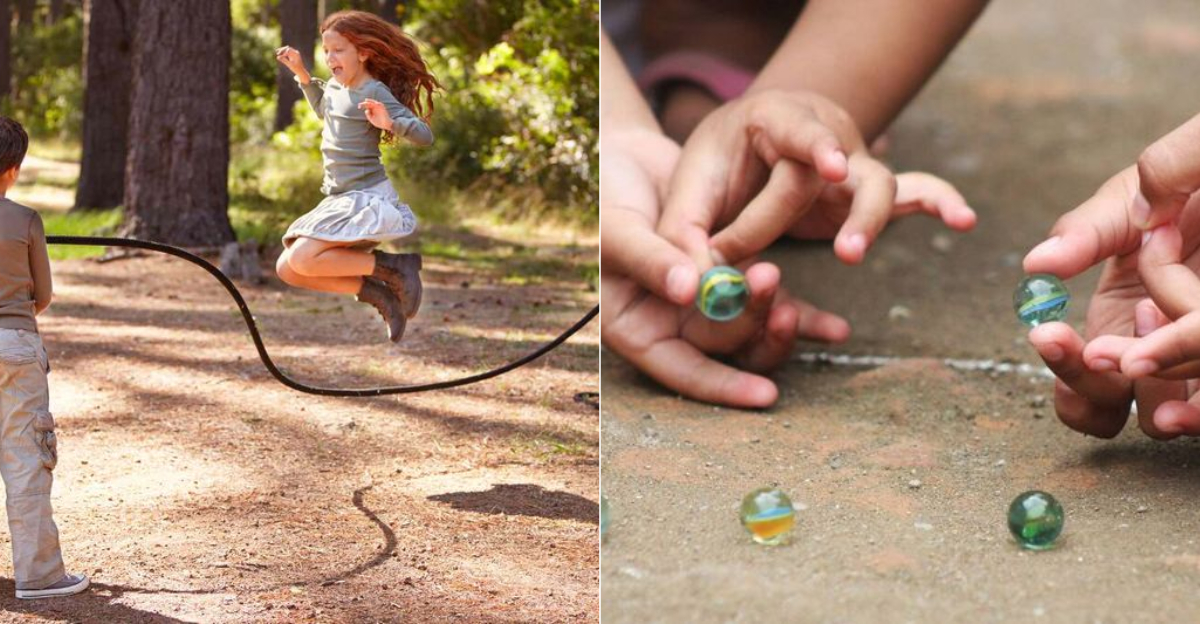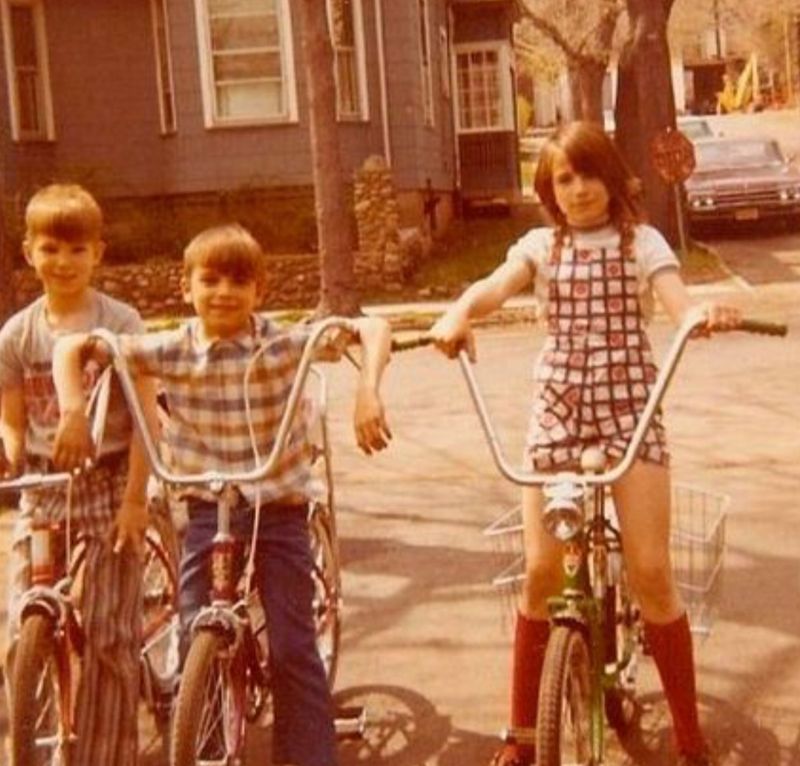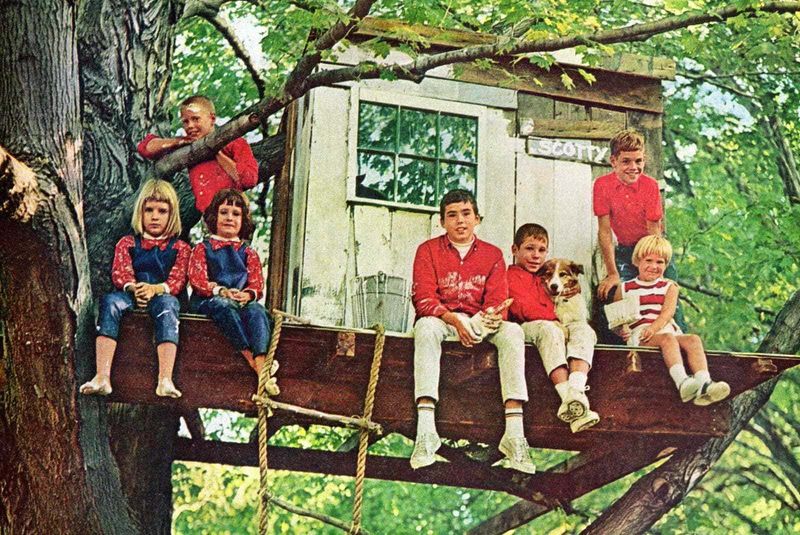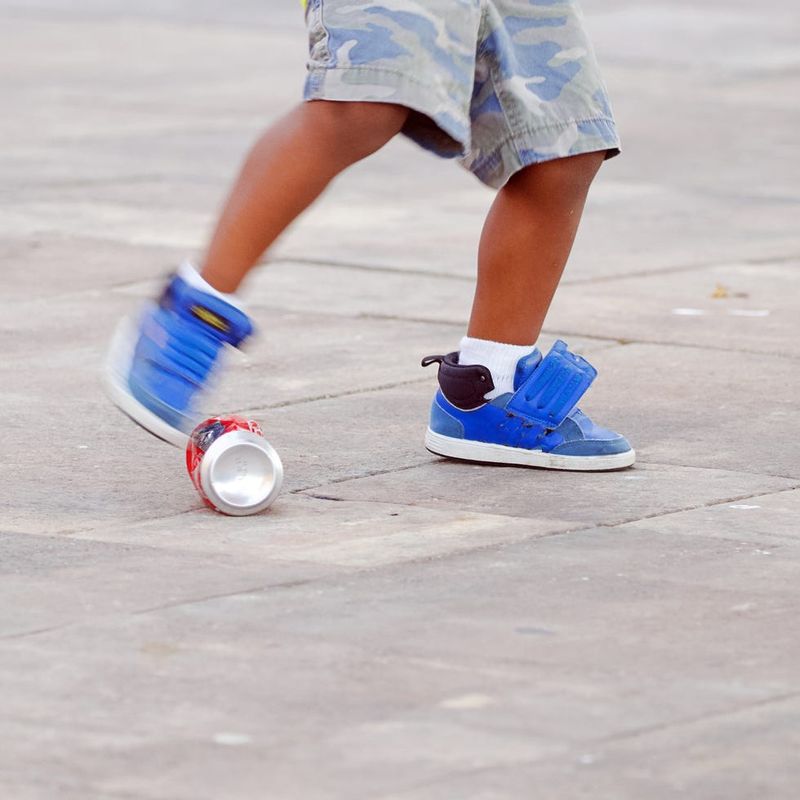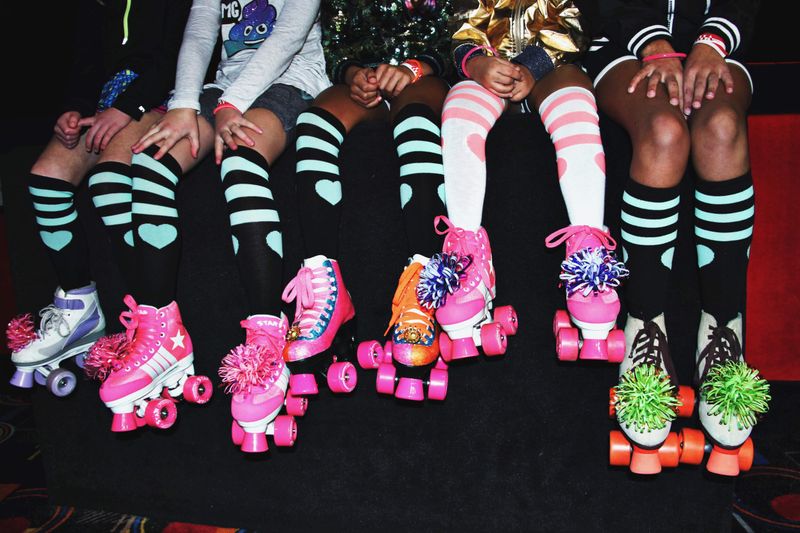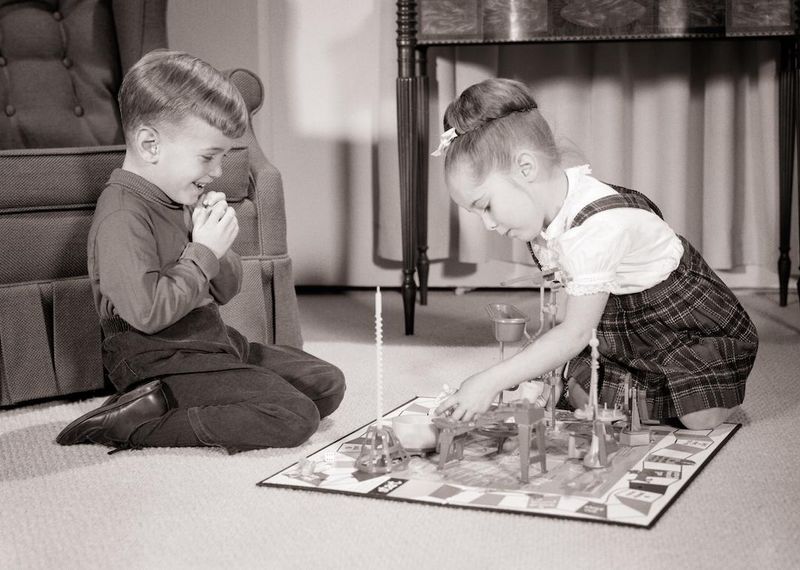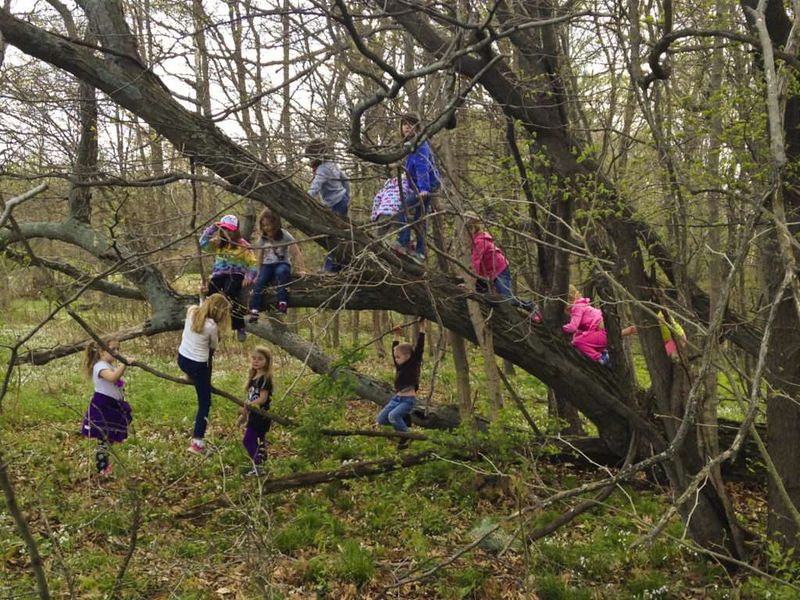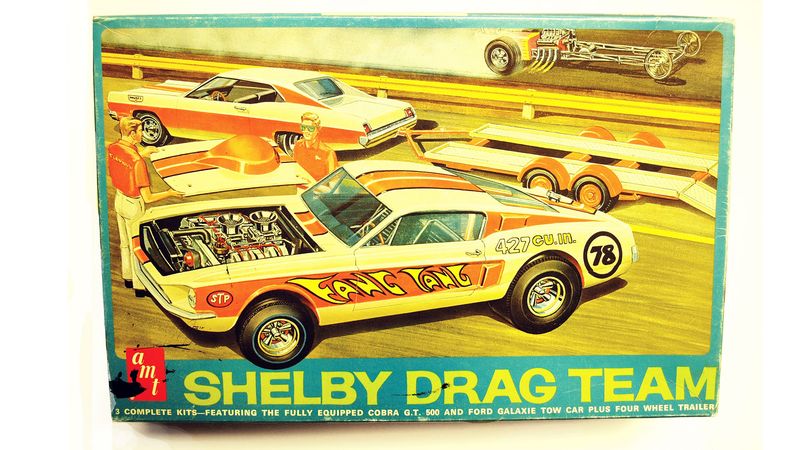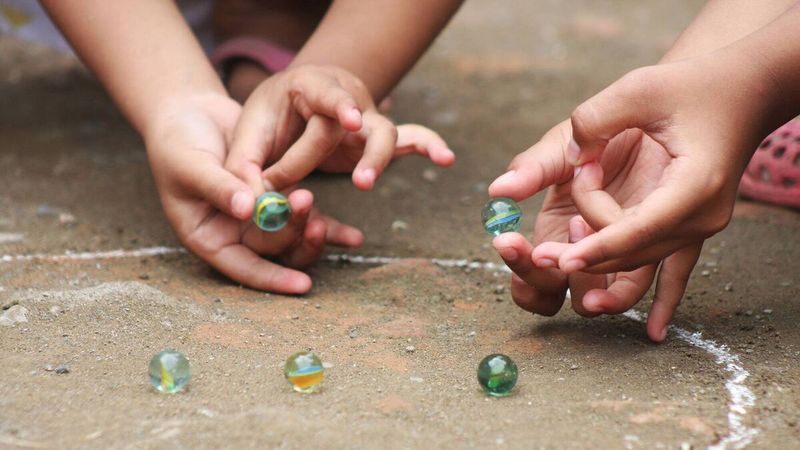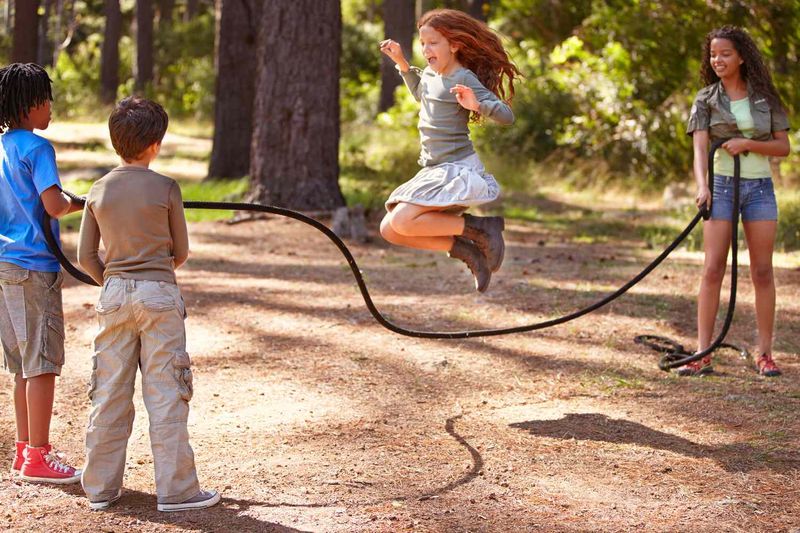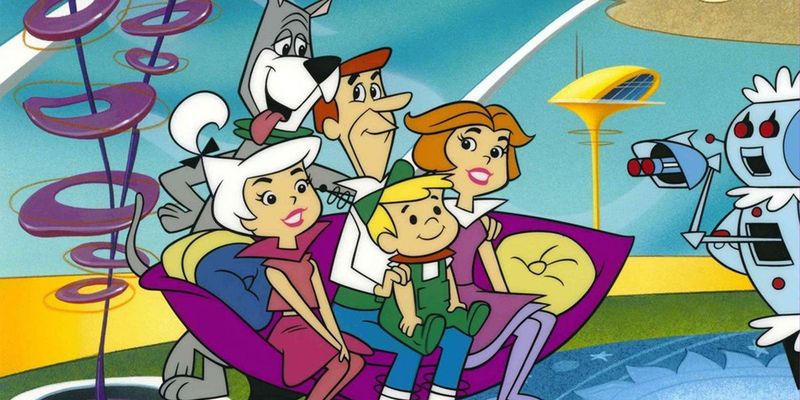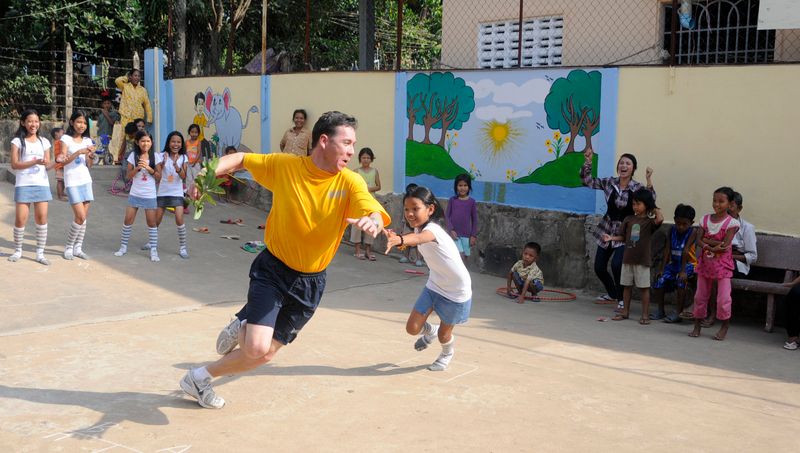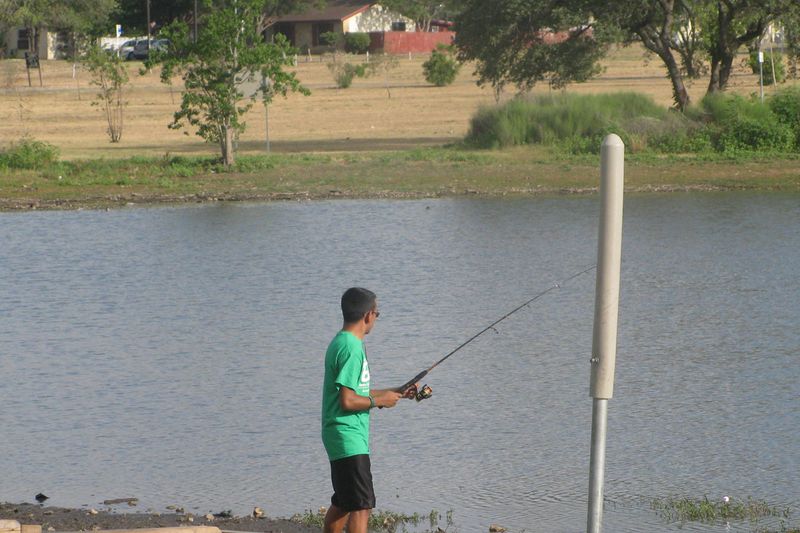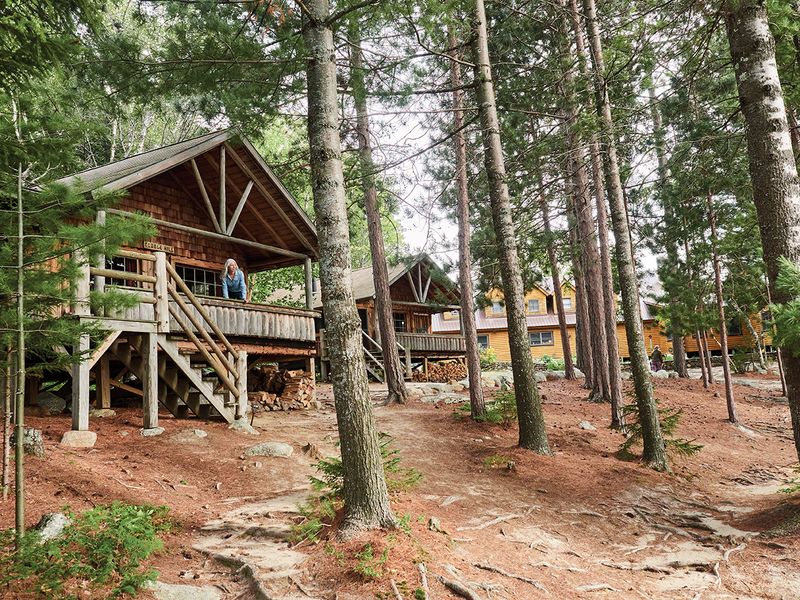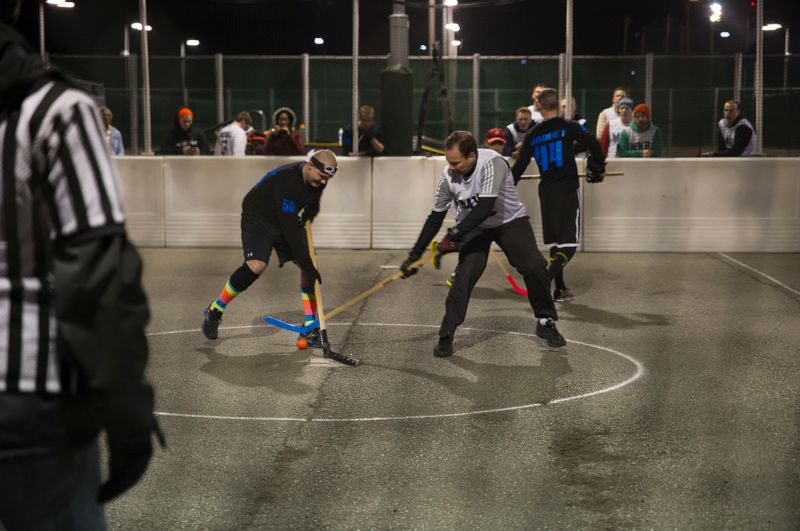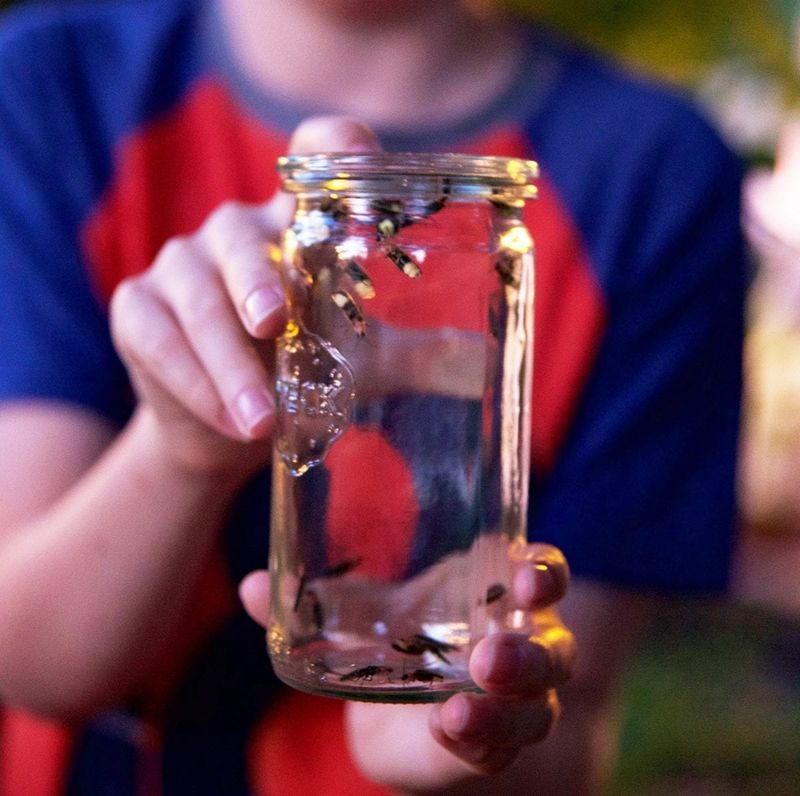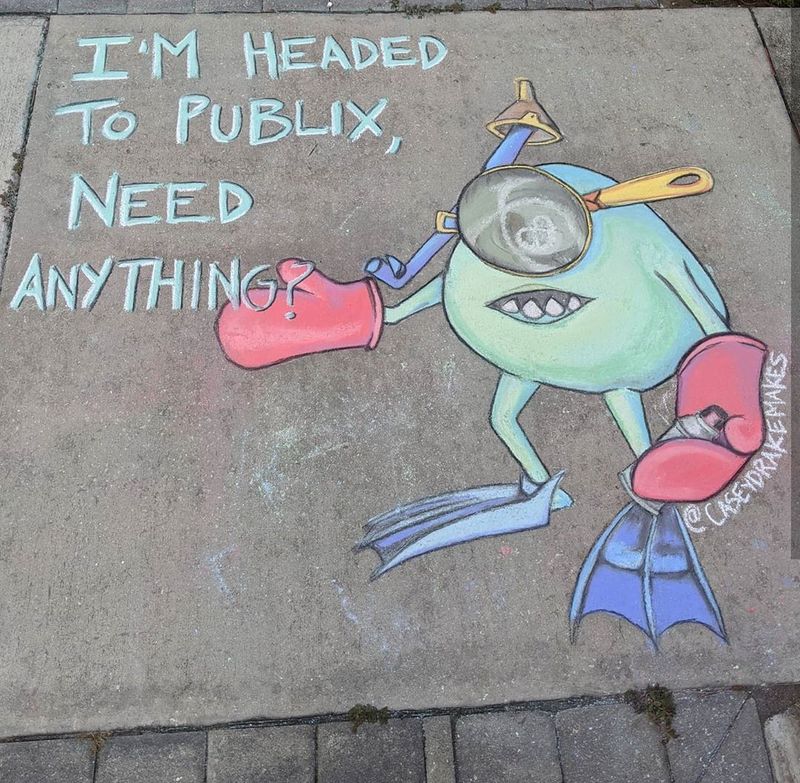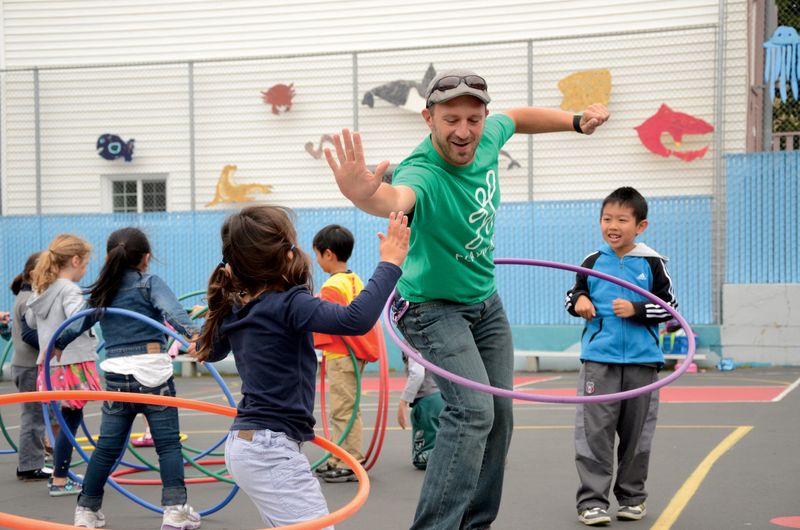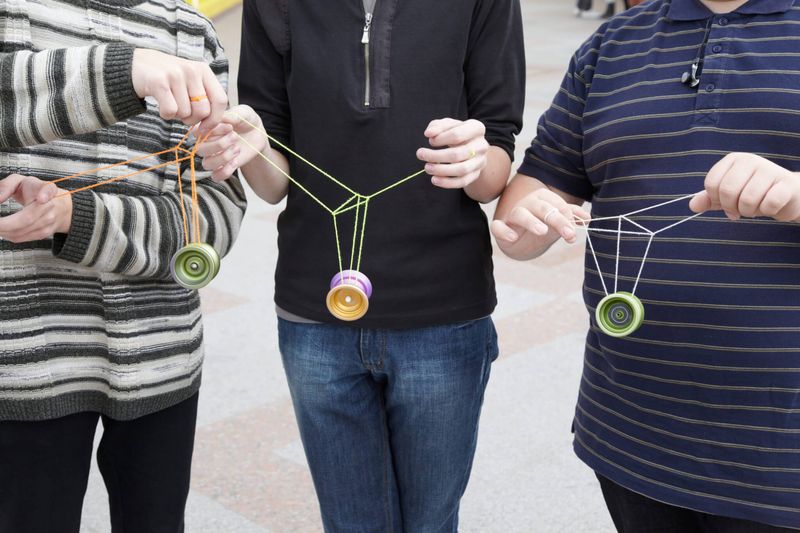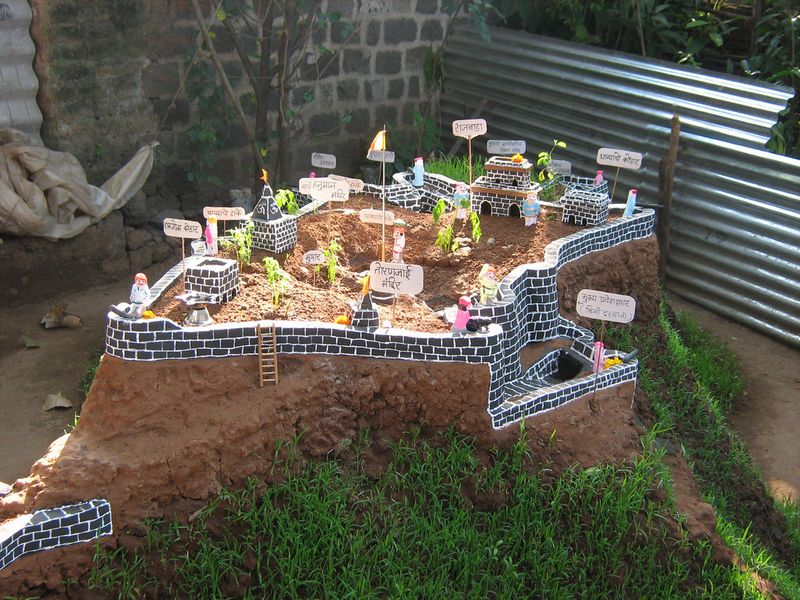The 1970s were a time of exploration and freedom for children, long before the digital age took over. After school, kids would dive into a world of fun and adventures, sparking creativity and friendships.
This era was marked by outdoor play, imaginative games, and the simple joys of life. Let’s take a nostalgic journey through 20 activities that defined the after-school hours for every 70s kid.
These cherished memories will surely bring a smile to your face, reminding you of a time when life was simple and the world was your playground.
1. Riding Bikes All Over Town
In the 1970s, riding bikes was a favorite pastime for kids. After school, children would grab their bikes, often decorated with colorful tassels, and set off on adventures around the neighborhood. This was a time of exploration and independence.
The freedom of cycling allowed kids to visit friends, explore unknown streets, and even race each other. Parents trusted their kids to be back by dinner, creating a sense of responsibility. These bike rides were more than just a way to pass time; they were a gateway to the world.
The thrill of speed and fresh air made cycling an unforgettable childhood memory.
2. Playing in Treehouses
Treehouses were a magical retreat for every 70s kid. Climbing up into these wooden havens, children created their own worlds. Treehouses served as forts, clubs, or simply a place to hang out with friends after school.
Constructed with simple materials, these hideaways fostered creativity and teamwork. Building and maintaining a treehouse taught kids practical skills and problem-solving. It was a space free from adult supervision, offering a sense of freedom.
The treehouse was more than a physical structure; it was a symbol of childhood adventure and imagination, where stories were shared, and friendships were forged.
3. Playing Kick the Can
Kick the Can was a classic 1970s game that brought kids together. Played outdoors, this game combined elements of hide and seek with tag, creating endless fun. After school, kids would gather in the neighborhood to begin the game.
The objective was to kick the can while avoiding being tagged. This required strategy, stealth, and teamwork. The thrill of hiding and the rush of dashing to the can made it an exhilarating experience.
Kick the Can fostered friendships and healthy competition, offering a way to burn off energy and creativity. It was simple, yet profoundly engaging.
4. Roller Skating in the Driveway
Roller skating was more than just a hobby; it was a passion for many 70s kids. After school, children would lace up their skates and glide along driveways, sidewalks, and local parks. It was a time of joy and laughter.
The rhythmic sound of skates on concrete was accompanied by music from portable radios. Friends would practice tricks, race each other, and sometimes even take a tumble.
Roller skating was a way to express freedom and creativity. It was a social activity that brought kids together, creating lasting memories and, sometimes, a few scraped knees.
5. Playing Board Games
Board games were a staple of 70s childhood evenings. Kids would gather around the living room floor, immersing themselves in games like Monopoly, Sorry!, and Life. These games were not just about winning but about bonding.
Playing board games taught kids patience, strategy, and the joy of healthy competition. They provided a way to engage with family and friends, often leading to laughter and lively discussions.
The simplicity and charm of board games made them an essential part of after-school relaxation. They allowed kids to escape into different worlds, sparking imagination and camaraderie.
6. Climbing Trees
Tree climbing was an exhilarating adventure for 70s kids. Scrambling up branches, children felt like explorers reaching new heights. After school, this activity offered a sense of freedom and accomplishment.
The challenge of finding the right footholds and the thrill of reaching the top made tree climbing an exciting pursuit. It taught kids about nature, balance, and perseverance.
From the tree branches, the world looked different, giving children a new perspective. It was a place to daydream, chat with friends, or simply enjoy the view. Tree climbing was a simple joy that fostered a deep connection with nature.
7. Building Model Kits
Building model kits was a beloved hobby for many 70s kids. It required patience, precision, and creativity. After school, children would spend hours assembling cars, airplanes, and ships, transforming pieces into miniature masterpieces.
This activity encouraged attention to detail and craftsmanship. It was a time to focus and create something tangible, teaching valuable skills along the way.
Model building was more than just a pastime; it was a form of art. Kids took pride in their finished models, often displaying them proudly. It was a fulfilling way to unwind and express creativity.
8. Playing Marbles
Playing marbles was a timeless game that connected 70s kids to generations past. After school, children would gather in backyards, pockets full of colorful marbles, ready to play.
The objective was to knock other marbles out of a drawn circle, requiring both skill and strategy. This game taught kids about aim and patience, offering friendly competition.
Marble games were not just about winning; they were a social activity that brought kids together, fostering friendships and fond memories. It was a simple, yet deeply engaging way to spend time outside, surrounded by laughter and camaraderie.
9. Jumping Rope
Jumping rope was a lively and energetic pastime for 70s kids. Whether alone or in groups, children would jump to catchy rhymes and rhythms, honing their coordination and agility.
After school, jump rope games were a common sight in playgrounds and backyards. It was a joyful way to exercise and socialize, challenging kids to master new tricks and rhymes.
The simplicity of a rope and the creativity of the chants made this activity timeless. It was an opportunity to bond with friends and enjoy the fresh air, creating a rhythm of laughter and movement.
10. Watching Cartoons
After school, 70s kids would eagerly gather around the television to watch cartoons. Shows like Scooby-Doo, The Flintstones, and Looney Tunes brought laughter and entertainment.
Cartoon time was a treasured part of the day, offering a chance to relax and unwind. It sparked imagination and provided a shared experience with siblings and friends.
These animated adventures were more than just shows; they were a part of childhood culture. The catchy theme songs and memorable characters left a lasting impression, making cartoon watching a beloved ritual that brought joy and laughter to homes.
11. Playing Tag
Tag was a universal game that got every 70s kid moving. After school, children would spill onto lawns and playgrounds, ready to run, chase, and escape. It was a game of speed, strategy, and spontaneity.
The simplicity of tag made it accessible to all. It encouraged physical activity and teamwork, fostering friendships along the way. Laughter and excitement were always present.
No equipment was needed—just the thrill of the chase. Tag was a timeless way to bond, offering endless variations and challenges. It was an essential part of the after-school routine, full of energy and joy.
12. Fishing at the Local Pond
Fishing was a relaxing after-school activity for 70s kids. Heading to the local pond with a simple rod and a can of worms, children found peace in nature.
Fishing taught patience and persistence. Casting the line and waiting for a bite required focus, turning a simple pond into a realm of adventure.
It was a time to connect with nature, friends, or even enjoy solitude. The thrill of catching a fish, no matter how small, brought joy and a sense of accomplishment. Fishing was more than a hobby; it was a cherished memory of growing up.
13. Exploring the Woods
Exploring the woods was an adventure waiting to be discovered. After school, 70s kids would gather their friends and head into the nearby woods, ready for exploration.
Nature became a playground where imagination thrived. Building forts, discovering hidden trails, and observing wildlife were all part of the experience.
This exploration fostered a love for nature and a sense of curiosity. It taught kids about the environment and the importance of teamwork. The woods were a place of freedom and discovery, creating memories that lasted a lifetime.
14. Playing Street Hockey
Street hockey was a thrilling after-school activity for 70s kids. With simple equipment like sticks and a ball, children would transform their streets into makeshift hockey rinks.
This game encouraged teamwork, strategy, and physical activity. It was a way to emulate favorite sports heroes, bringing ice hockey excitement to the pavement.
Street hockey fostered community and friendly competition. Kids of all skill levels could join, making it inclusive and fun. It was an energetic way to spend the afternoon, filled with cheers and the clatter of sticks.
15. Chasing Fireflies
Chasing fireflies was a magical evening pursuit for 70s kids. As dusk fell, children would grab jars and head outside, ready to capture the glowing wonders.
This activity was about wonder and excitement. The flickering lights in the night sky were mesmerizing, creating a dance of nature that captivated young hearts.
Catching fireflies was more than a game; it was a moment of connection with nature and the mysteries of the night. It left children with a sense of awe and a jar of glowing memories, symbolizing the simple joys of childhood.
16. Drawing with Sidewalk Chalk
Sidewalk chalk turned ordinary pavement into a canvas for 70s kids. After school, children would let their creativity flow, drawing vibrant pictures and hopscotch grids.
This activity was about expression and imagination. Each drawing told a story, whether it was a landscape, a favorite cartoon character, or a simple game.
Playing with chalk was a communal activity, bringing neighbors together and sparking conversations. It was a way to brighten up the neighborhood and share a piece of art, all before the next rainfall washed it away, readying the canvas for new creations.
17. Playing with Hula Hoops
Hula hoops were all the rage for 70s kids. After school, children would grab these colorful rings and test their skills, seeing who could keep the hoop spinning the longest.
This activity was about rhythm, coordination, and fun. It was a playful challenge that brought smiles and laughter, whether trying to master the basics or inventing new tricks.
Hula hooping was a social activity, encouraging friendly competition and camaraderie. It was an energetic way to enjoy the outdoors, offering both exercise and entertainment in a simple, captivating form.
18. Playing with Yo-yos
Yo-yos were a popular toy that captivated 70s kids. After school, children would practice tricks like “Walk the Dog” and “Around the World,” mastering the art of yo-yoing.
This activity required patience and skill, turning a simple toy into a source of endless fascination. Yo-yos were portable, making them perfect for impromptu challenges among friends.
Playing with yo-yos was more than just a pastime; it was a way to hone dexterity and creativity. It provided both a sense of accomplishment and a fun, interactive way to pass the time, creating a sense of community and shared interest.
19. Building Mud Forts
Building mud forts was a messy but beloved activity for 70s kids. After school, children would gather in backyards, ready to dig, construct, and create their own muddy masterpieces.
This activity was about teamwork and imagination. Using shovels, buckets, and bare hands, kids crafted forts, tunnels, and castles, letting their creativity run wild.
The joy of building something tangible and the freedom to get dirty made mud forts a cherished pastime. It taught kids about construction, cooperation, and the simple pleasure of playing in the dirt, creating lasting friendships and unforgettable memories.
20. Flying Kites
Flying kites was a joyful pastime for 70s kids. After school, children would head to open fields, ready to launch their kites into the sky, letting the wind carry them.
This activity was about freedom and the joy of watching a kite soar. It required patience to get the kite airborne and skill to keep it dancing in the breeze.
Flying kites was a communal event, often with friends and family cheering along. It was an opportunity to connect with nature and enjoy the simple pleasure of the wind, creating moments of happiness and wonder.
